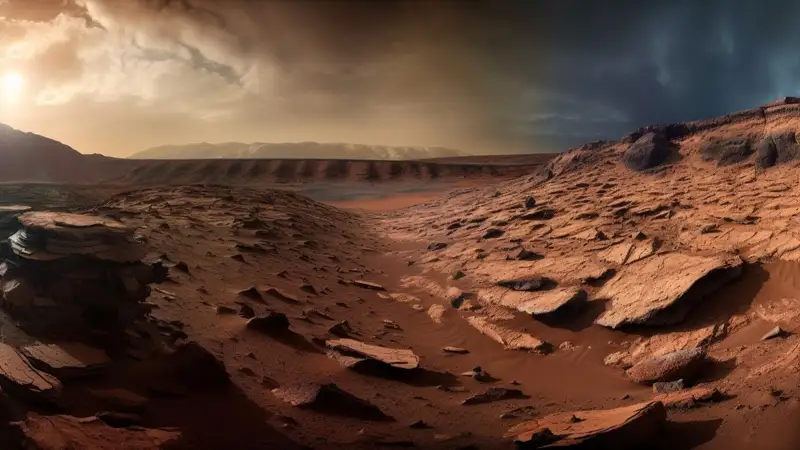Beneath the dust, a drowned past: Mars’ ocean story revealed
Published in the Proceedings of the National Academy of Sciences, new research provides "crucial insights into the evolution of the ancient Martian environment" at Utopia Planitia, offering additional evidence of a long-lived ocean on Mars, Kazinform News Agency reports.

China’s Zhurong rover, which landed in May 2021, used ground-penetrating radar to uncover vast subsurface layers of sedimentary rock resembling Earth’s coastal beach deposits. Extending over 1.3 kilometers, these formations suggest a stable, long-lived body of water rather than a short-term flood. Researchers describe the area as ancient “shorelines” shaped by waves, tides, and sediment transport processes.
The sedimentary structures dip at inclinations of 6° to 20° and are located at depths of 10 to 35 meters, indicating a shoreline that gradually expanded over time.
“This reveals a prolonged record of foreshore progradation rather than a single, frozen-in-place foreshore environment,” the study highlights.
Further analysis suggests that a distant river may have supplied sediment to the shoreline, reinforcing the idea that Mars once had a dynamic water system with rivers, tides, and ocean currents.
“First, a small body of water would limit the fetch and thus the formation of sediment-transporting waves required for longshore transport. Second, there must also have been a primary sediment source, likely a river, sufficiently distant to have had its channel-filling deposits or floodplain not directly imaged in the GPR data. The presence of a distant river supplying sediment to this area is consistent with the inferred fine-to-medium sand grain size of the foreshore deposits and indicates that stable liquid water at the Martian surface was at least a regional and sustained phenomenon, rather than merely localized and short-lived melt,” the study explains.
Although the exact timeline remains uncertain, researchers estimate that the Martian ocean existed for tens of millions of years. Based on Earth’s coastal sedimentation rates, they suggest a deposition rate of “~10 to 40 cm per thousand years,” pointing back to “a warm and wet period on Mars.”
This discovery builds on recent findings of liquid water beneath Mars’ surface. Earlier, NASA scientists detected a subsurface water “bubble”, while a separate study published later suggested that meltwater reservoirs beneath the ice could potentially support microbial life.
